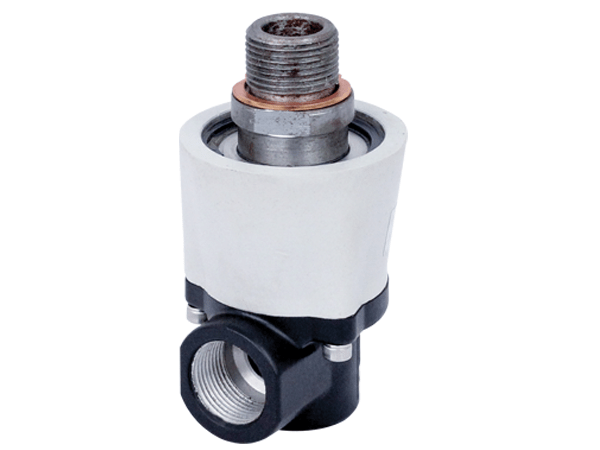Rotary unions are devices that allow the transfer of fluid or gas between stationary and rotating parts of a machine or equipment. They are crucial components in many industrial applications, including printing, packaging, manufacturing, and processing. In this blog, we will discuss what rotary unions are, the different types available, their applications, and how to maintain them.
What is a Rotary Union?
A rotary union is a mechanical device that allows the transfer of fluid or gas from a stationary supply source to a rotating part of a machine or equipment. The main function of a rotary union is to provide a leak-free connection between the stationary and rotating parts. Rotary unions consist of two parts, a stationary part, and a rotating part, that are connected by a set of seals that prevent the fluid or gas from leaking out. The rotary union’s seals can be made of different materials, such as rubber, Teflon, or metal, depending on the type of fluid or gas being transferred.
Rotary unions are designed to handle different types of fluids or gases, including air, water, steam, hydraulic oil, and chemicals. They come in various sizes, shapes, and configurations to meet different industrial requirements. Some rotary unions are designed to handle high-pressure fluids, while others are designed to handle high-speed rotation.
Types of Rotary Union
There are different types of rotary unions available, depending on the application and the type of fluid or gas being transferred. Some of the most common types include:
Single Flow Rotary Union: This type of rotary union allows the transfer of fluid or gas in one direction only. It is commonly used in applications where there is no need to transfer fluid or gas in both directions.
Dual Flow Rotary Union: This type of rotary union allows the transfer of fluid or gas in two directions. It is commonly used in applications where there is a need to transfer fluid or gas in both directions.
Multi-Passage Rotary Union: This type of rotary union allows the transfer of fluid or gas in multiple directions. It is commonly used in applications where there is a need to transfer different types of fluids or gases simultaneously.
High-Speed Rotary Union: This type of rotary union is designed to handle high-speed rotation. It is commonly used in applications where there is a need to transfer fluid or gas at high speeds, such as in printing or packaging machines.
High-Pressure Rotary Union: This type of rotary union is designed to handle high-pressure fluids or gases. It is commonly used in applications where there is a need to transfer fluid or gas at high pressure, such as in hydraulic systems.
Applications of Rotary Union
Rotary unions are used in various industrial applications, including:
Printing and Packaging: Rotary unions are used in printing and packaging machines to transfer ink, water, and other fluids to the printing rollers or cylinders.
Manufacturing: Rotary unions are used in manufacturing machines to transfer hydraulic oil or other fluids to the rotating parts of the machine.
Chemical Processing: Rotary unions are used in chemical processing plants to transfer chemicals and other fluids to the rotating parts of the equipment.
Food Processing: Rotary unions are used in food processing machines to transfer water, steam, and other fluids to the rotating parts of the equipment.
Steel and Aluminum Production: Rotary unions are used in steel and aluminum production to transfer coolant, hydraulic oil, and other fluids to the rotating parts of the equipment, such as rollers or cylinders.
Aerospace: Rotary unions are used in the aerospace industry to transfer hydraulic fluids and gases in the aircraft’s control systems.
Marine: Rotary unions are used in marine applications to transfer fluids to the rotating parts of propellers, winches, and other equipment.
Energy: Rotary unions are used in energy production, such as wind turbines, to transfer hydraulic oil and other fluids to the rotating parts of the equipment.
Maintenance of Rotary Union
Rotary unions require regular maintenance to ensure optimal performance and prevent leakage. Here are some tips on how to maintain rotary unions:
Regular Inspection: It is essential to inspect rotary unions regularly for signs of wear and tear. Check for any leaks, cracks, or other damage to the seals, housing, or shaft.
Proper Lubrication: Proper lubrication is crucial for the smooth operation of the rotary union. Use the recommended lubricant and apply it regularly to the shaft and seals.
Cleaning: Regular cleaning is essential to remove any dirt, debris, or other contaminants that may affect the performance of the rotary union.
Proper Installation: Proper installation is crucial to ensure the rotary union functions correctly. Observe the installation guidelines and torque recommendations provided by the manufacturer.
Repair or Replacement: If the rotary union shows signs of damage or wear, repair or replace it as soon as possible. Delaying repairs can lead to more severe problems, such as leakage or equipment failure.
In conclusion, rotary unions are crucial components in many industrial applications, allowing the transfer of fluid or gas between stationary and rotating parts of a machine or equipment. Understanding the different types of rotary unions available, their applications, and how to maintain them is essential for ensuring optimal performance and preventing leaks or equipment failure. Regular inspection, proper lubrication, cleaning, and repair or replacement when necessary are all critical steps in maintaining rotary unions.


